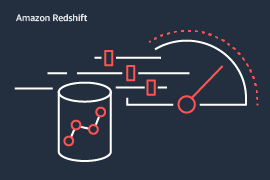AWS Big Data Blog
Tag: Amazon Redshift
Monitor and control the storage space of a schema with quotas with Amazon Redshift
Many organizations are moving toward self-service analytics, where different personas create their own insights on the evolved volume, variety, and velocity of data to keep up with the acceleration of business. This data democratization creates the need to enforce data governance, control cost, and prevent data mismanagement. Controlling the storage quota of different personas is a significant challenge for data governance and data storage operation. This post shows you how to set up Amazon Redshift storage quotas by different personas.
Migrating your Netezza data warehouse to Amazon Redshift
With IBM announcing Netezza reaching end-of-life, you’re faced with the prospect of having to migrate your data and workloads off your analytics appliance. For some, this presents an opportunity to transition to the cloud.
Enter Amazon Redshift.
Build an AWS Well-Architected environment with the Analytics Lens
Building a modern data platform on AWS enables you to collect data of all types, store it in a central, secure repository, and analyze it with purpose-built tools. Yet you may be unsure of how to get started and the impact of certain design decisions. To address the need to provide advice tailored to specific technology and application domains, AWS added the concept of well-architected lenses 2017. AWS now is happy to announce the Analytics Lens for the AWS Well-Architected Framework. This post provides an introduction of its purpose, topics covered, common scenarios, and services included.
Monitor and optimize queries on the new Amazon Redshift console
Tens of thousands of customers use Amazon Redshift to power their workloads to enable modern analytics use cases, such as Business Intelligence, predictive analytics, and real-time streaming analytics. As an administrator or data engineer, it’s important that your users, such as data analysts and BI professionals, get optimal performance. You can use the Amazon Redshift […]
Federate Amazon Redshift access with Microsoft Azure AD single sign-on
December 2022: This post was reviewed and updated for accuracy. February 2nd, 2022: This blog was updated by Kay Lerch. Recently, we helped a large enterprise customer who was building their data warehouse on Amazon Redshift, using Microsoft Azure Active Directory (Azure AD) as a corporate directory. Their requirement was to enable data warehouse users […]
Achieve finer-grained data security with column-level access control in Amazon Redshift
September 2023: This post was reviewed for accuracy. Amazon Redshift is the most popular cloud data warehouse because it provides fast insights at a low cost. Customers can confidently run mission critical workloads, even in highly regulated industries, because Amazon Redshift comes with out of the box security and compliance. The security features, combined with […]
Speed up your ELT and BI queries with Amazon Redshift materialized views
The Amazon Redshift materialized views function helps you achieve significantly faster query performance on repeated or predictable workloads such as dashboard queries from Business Intelligence (BI) tools, such as Amazon QuickSight. It also speeds up and simplifies extract, load, and transform (ELT) data processing. You can use materialized views to store frequently used precomputations and […]
Accelerate Amazon Redshift Federated Query adoption with AWS CloudFormation
Amazon Redshift Federated Query allows you to combine the data from one or more Amazon RDS for PostgreSQL and Amazon Aurora PostgreSQL databases with data already in Amazon Redshift. You can also combine such data with data in an Amazon S3 data lake.
Build a Simplified ETL and Live Data Query Solution using Redshift Federated Query
You may have heard the saying that the best ETL is no ETL. Amazon Redshift now makes this possible with Federated Query. In its initial release, this feature lets you query data in Amazon Aurora PostgreSQL or Amazon RDS for PostgreSQL using Amazon Redshift external schemas. Federated Query also exposes the metadata from these source databases through system views and driver APIs, which allows business intelligence tools like Tableau and Amazon Quicksight to connect to Amazon Redshift and query data in PostgreSQL without having to make local copies.
Improved speed and scalability in Amazon Redshift
Amazon Redshift delivers fast performance, at scale, for the most demanding workloads. Getting there was not easy, and it takes consistent investment across a variety of technical focus areas to make this happen. This post breaks down what it takes to build the world’s fastest cloud data warehouse.







